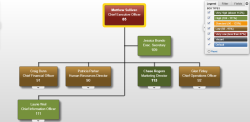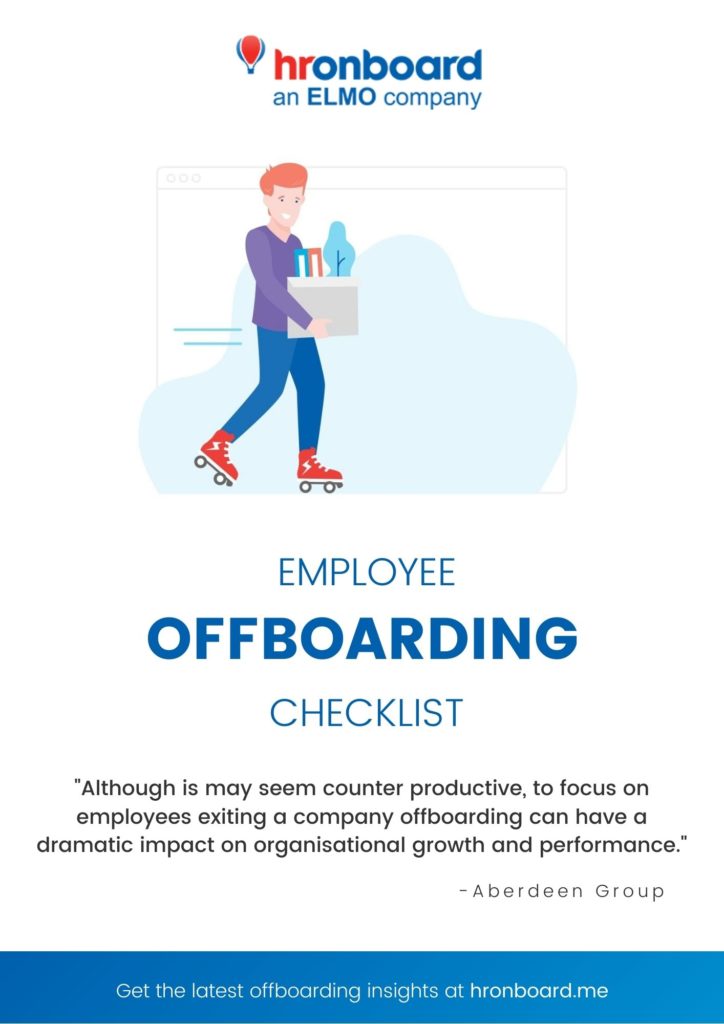Employee Offboarding Checklist: in 10 easy steps
The day inevitably arrives. It’s time to offboard an employee.
A resignation letter is placed on your desk, and the employee tells you they’re moving on.
Don’t panic – there’s no need to go into damage control. Hopefully, you’ve already got a successor in mind for the exiting employee’s role.
All you’ve got to do is make sure the employee’s outplacement is managed legally, fairly and properly. Here’s a 10 step employee offboarding checklist you can use to get through the process stress-free.
Checklist Contents
- 1. Communicate the departure
- 2. Transfer the employee’s knowledge
- 3. Recover company assets
- 4. Update your org charts and company directory
- 5. Revoke systems access
- 6. Complete final pay process
- 7. Perform an exit survey or interview
- 8. Provide letters of reference
- 9. Thank the exiting employee
- 10. Engage the former employee in an alumni group
1. Communicate the departure
Don’t delay in letting the team know the employee is moving on. You don’t want rumours or gossip disrupting your workplace.
Let everyone know the employee is leaving, thank them for their service and if it’s appropriate, let everyone know why they’re moving on and who will be taking over their responsibilities.
In particular, make sure the employee’s direct team, managers and subordinates know what’s going on, as well as payroll and IT, who will have a few offboarding processes to carry out themselves.
You may even want to communicate the employee’s departure to customers if they are in a customer-facing role.
For senior managers, it may also be necessary to make a public announcement in the interest of transparency.

2. Transfer the employee’s knowledge to their successor
If you’ve had a successor planned, this step should be relatively easy.
If not, hopefully you’ve still got a good relationship with the exiting employee. Ask them to transfer their knowledge (the ‘How To’s for their role) and train up their successor.
When you don’t have a successor ready to go, you’re going to have to create documents, processes and contact lists ready for the replacement to use once you’ve filled the position.
Exactly how you transfer this knowledge will depend largely on the role (technical, process-driven roles can be easily documented and detailed, but management processes can be a bit harder to pass on), but remember, once the employee leaves, they’re unlikely to be much help when questions or problems do arise.

3. Recover company assets
Surprisingly, many organisations fail to recover company assets like mobile phones, laptops, and equipment when employees leave. Employee theft in the retail industry is reported to cost Australian businesses $300M p.a., so these losses can clearly add up.
The trick is to make someone responsible for recovering the assets. Ask the employee to do it, but have someone (a line manager, maybe IT or someone in the provisioning team) responsible for following up and keeping track of the assets as they are returned.
4. Update your org charts and company directory
References to employees no longer at the organisation slow down and confuse internal communication – especially for new employees.
Make sure your org charts and directories are up to date, with the employee’s replacement details included to ensure a smooth transition.
If the employee is referenced in any company collateral (brochures, website) be sure to update these too.
For those of you with an HRIS that has self-service functionality, you can push this task onto line managers, the employee’s successor or the exiting employee, but it’s still HR’s responsibility to make sure this process is carried out and the information is up to date.

5. Revoke systems access
Cyber security breaches cost an estimated $8.3M in Australia each year, and a large proportion of those breaches are believed to be from former employees who never had their system access revoked.
Whilst this is generally an IT process, IT will need to be notified by HR about the departing employee to complete their offboarding checklists.
Remember that any shared accounts (shared passwords, single-user internal systems and so on) will also need to have their passwords updated to prevent breaches.
6. Complete final pay process
Payroll systems have this functionality built in, but it’s important to make sure the final pay process is actually carried out by payroll.
Shockingly, in some large organisations employees aren’t always taken off the payroll system until months after they exit.
Communication is key here, as you’ll need to ensure payroll knows details like the employee’s end date, notice period and any extra information they’ll need to legally compensate the employee.
7. Perform an exit survey or interview
While the effectiveness of exit surveys is often debated, they can also lead to some good insights into what does and doesn’t work in your organisation.
They key is to keep the questions short and to the point, encourage honesty and use the data to prevent future high performers from leaving your team.
8. Provide letters of reference and exiting documentation
Your exiting employee may want a letter of reference, or at the very least, a certificate of service as evidence of their employment.
The amount of documentation you provide to the employee will depend on the circumstances of their separation, but you’ll be legally obliged to provide final pay information, a certificate of service and contracts if requested, so be prepared.

9. Thank the exiting employee
Particularly if the employee is leaving on good terms, make sure they feel appreciated for their contribution.
Not only will this make them more likely to look on your organisation favourably in the future (maybe as a future customer, partner or supplier), but it will also keep up morale for the rest of the team who may have negative feelings about the separation.
10. Engage the former employee in an alumni group
Former employees are becoming more likely to ‘boomerang’ back into the organisation later on in their careers, bringing with them added experience, knowledge and connections.
They’re also great at directing potential candidates in their network towards your advertised positions.
Of course, to ensure both of these things happen, you’re going to need to make sure the employee has a very positive offboarding experience.
You’re also going to need a way to communicate with them later on down the track.
Alumni programs are a good way to create a network of former employees to keep in touch with (and to advertise open positions). They can be simple to set up, and they can make the recruitment process much easier later on down the track.
Want this checklist as a PDF?
Fill in your details to download the easy to use checklist to seamlessly offboard an employee

